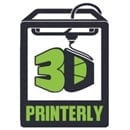How to Use Retract at Layer Change in 3D Printing
The “Retract at Layer Change” is an important feature that helps prevent unwanted oozing and stringing of the filament when the printhead moves to a new starting position is the “Retract at Layer Change.” Don’t worry if you’re unfamiliar with it; I’ll discuss how to use it in this article. To use the “Retract at…
